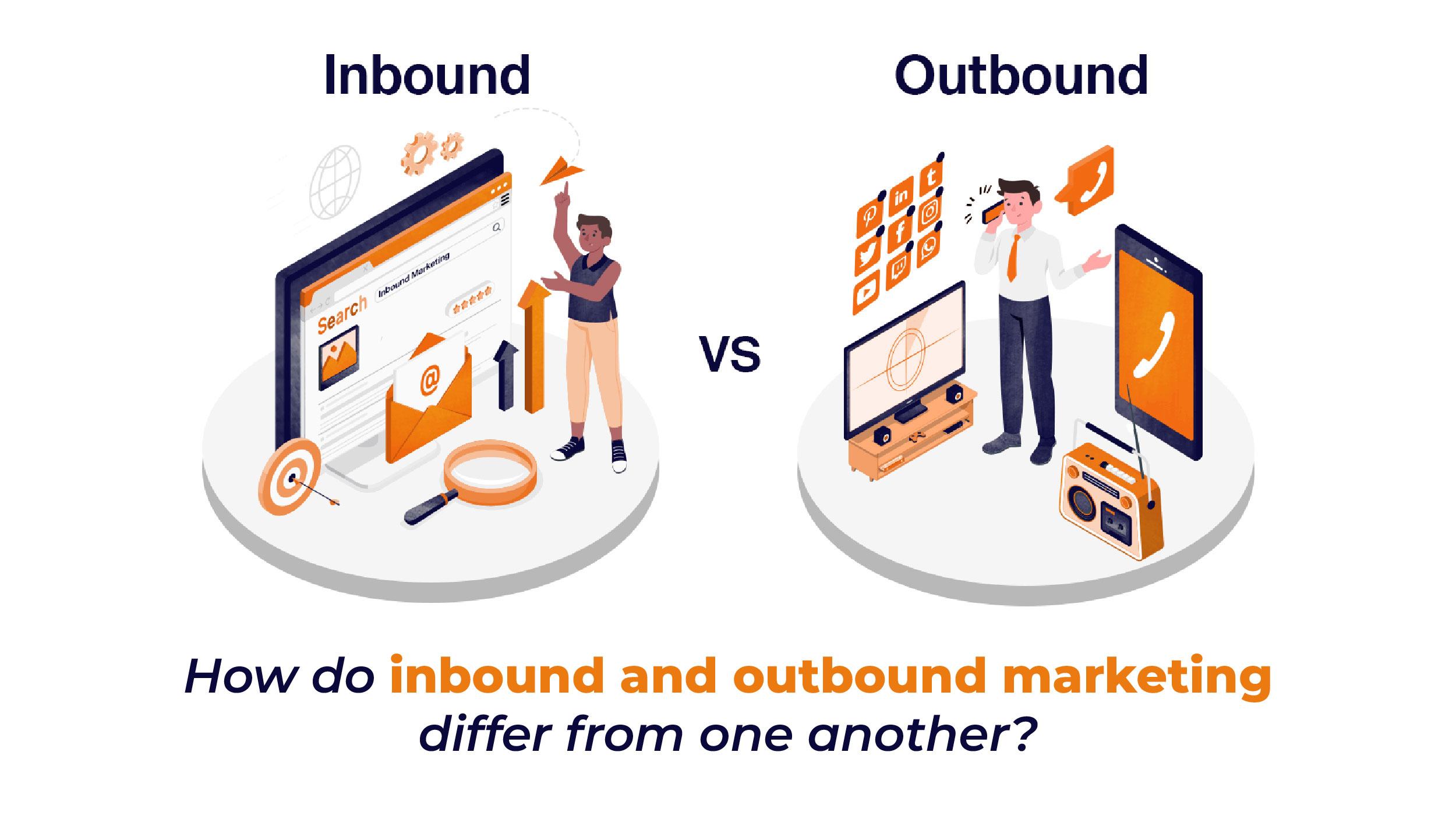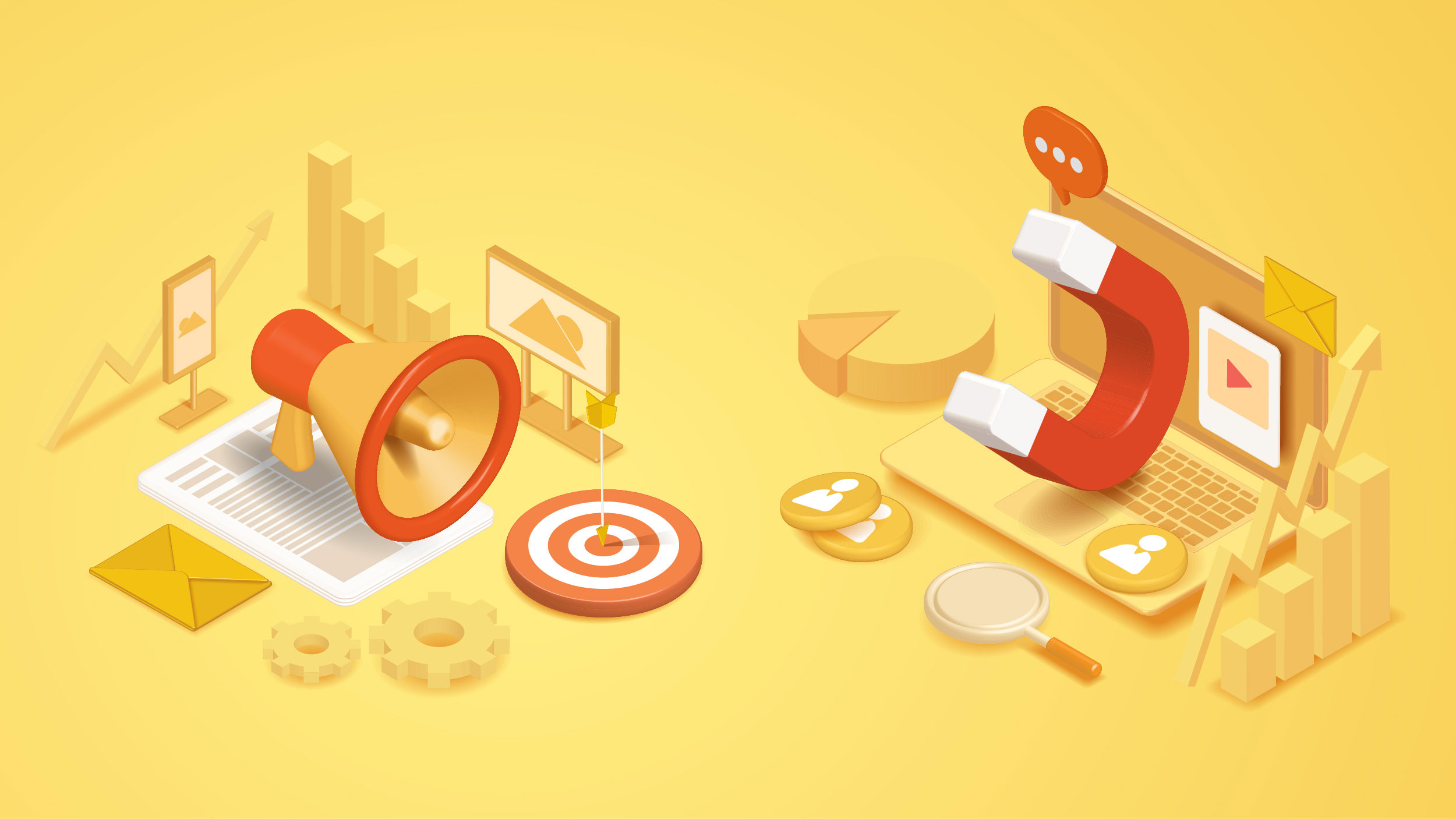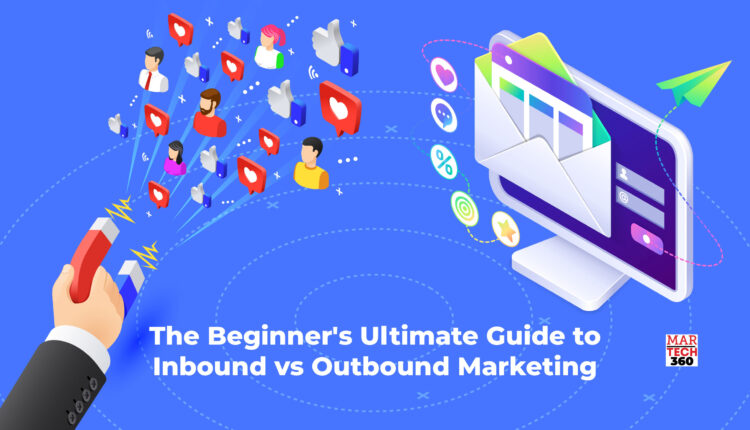The average person is thought to be bombarded with between 6,000 and 10,000 advertisements per day.
There is a lot of competition for your prospects’ attention, including anything from TV advertisements and outdoor signage to radio spots and digital marketing throughout the internet and social media. It’s sufficient to prompt B2B marketers to consider how to improve consumer attraction through efficient marketing initiatives, then persuade them to make a purchase.
As a marketer, the inevitable question you face is probably whether to choose inbound vs outbound marketing services. But, then the real question is, how do you go along to choose one? How do you know out of inbound vs outbound sales, which one is the better choice?
Well, that’s exactly what we will be discussing in this article, let’s get it started.
What is Inbound Marketing vs Outbound Marketing?
Inbound marketing is a method in which you produce content or use social media tactics to raise brand recognition so that people become aware of you, may visit your website for information, may express interest in your product, and may even decide to buy it. Inbound tactics allow you to engage an audience of people who you can more easily qualify as a prospect or lead, but certain outbound strategies require a lot of time and work and may return no results.
In other words, inbound marketing focuses on relevant audiences using online content to ‘draw’ people into the sales funnel, as opposed to outbound marketing, which uses conventional strategies to ‘push’ information out to a large audience. While inbound marketing depends on slow-burn content marketing strategies like blogs, opt-in email nurturing processes, and native recommendations, outbound marketing strategies include TV advertisements, billboards, cold calling, and display ads.
How do inbound and outbound marketing differ from one another?
 The major distinctions between inbound and outbound marketing are numerous. In outbound marketing, people are actively contacted to generate interest in a product. In contrast, the focus of inbound marketing is on producing and sharing content that drives visitors to your website. Outbound marketing often employs a more aggressive, all-encompassing strategy with the belief that at least some of the target audience will convert. Inbound marketing is typically subtler and focuses on gradually persuading a certain target population to make a purchase.
The major distinctions between inbound and outbound marketing are numerous. In outbound marketing, people are actively contacted to generate interest in a product. In contrast, the focus of inbound marketing is on producing and sharing content that drives visitors to your website. Outbound marketing often employs a more aggressive, all-encompassing strategy with the belief that at least some of the target audience will convert. Inbound marketing is typically subtler and focuses on gradually persuading a certain target population to make a purchase.
What is Outbound Marketing?
Outbound marketing, often known as “interruption” or “push” marketing, employs strategies that disseminate a message to a large audience in an effort to generate sales. Whether or not they are seeking your products or services, vast audiences of individuals are targeted by cold calling, direct mail, mass cold email campaigns, print, television, and radio advertising, as well as other techniques. It’s usually a one-way dialogue that concentrates on the goods or services and the justifications for why the audience ought to purchase them.
Challenges with Outbound Marketing
The main issue with traditional marketing is that the message must be very broad and general in order to be suited for the greatest possible audience. In other words, outbound cannot be relevant to particular demands and difficulties.
In addition, the following factors make conventional marketing ineffective today:
79% of poll respondents who watch TV during commercial breaks use their phones or another device. Additionally, with the rise of online TV streaming services, television advertisements can be missed, and if your audience has tuned out, you won’t have a chance to leave a lasting impression.
Radio advertising can be easily avoided by listeners due to digital music providers and satellite radio. Over 500 million people were using Spotify actively as of March 2023. Many of those listeners choose to pay for the ad-free Spotify Premium service.
Only 42.2% of people who receive direct mail read or skim their mail. This strategy, also known as “junk mail,” is ineffective.
Over 1,700 banner advertisements are displayed to the typical user each month.
That’s a huge net that is probably not particularly targeted.
Every day, the typical office worker receives 120 emails.5 People frequently ignore most emails because a large portion of them are probably spam.
Publishers typically lose 15–30% of their ad income to ad blocking. Since your audience has options and means to avoid you, pushing messages is no longer effective. Marketers who continue to employ outbound strategies are asking themselves: “How do we find customers who are interested in our products?”
Additionally, what will it take to convert those prospects into paying customers? There is a way to attract prospects and convert them into clients. The following is a hint: Google reportedly handles 5.6 billion queries daily.
What is Inbound Marketing?
 Inbound marketing is “magnetic” and targeted towards a specific audience, in contrast to outbound marketing, which pushes messages to a large audience. Instead of broadcasting generic messages to disinterested audiences, inbound marketing enables you to draw in your top customers—those who are actively seeking solutions online.
Inbound marketing is “magnetic” and targeted towards a specific audience, in contrast to outbound marketing, which pushes messages to a large audience. Instead of broadcasting generic messages to disinterested audiences, inbound marketing enables you to draw in your top customers—those who are actively seeking solutions online.
These potential customers receive assistance, direction, and instruction on your website that is pertinent to the online search they are performing.
And there, you can observe some of the Attract, Engage, and Delight elements of the inbound marketing flywheel in action.
Blog material, video content, and downloadable (or “advanced”) content offered on a business website, such as white papers, manuals, eBooks, tip sheets, and others, are at the core of inbound marketing. Additionally, by optimizing your content for search engines (SEO), you increase your chances of being found by potential customers.
When employing an inbound strategy, marketers create this content in order to coincide with particular phases of the buyer’s journey:
Buyers initially familiarize themselves with the issue and potential solutions at the start of their trip.
They are contrasting a limited number of alternative solutions in the middle.
They are conducting the necessary research to reach a decision at the end of their purchasing process. Then there is the actual customer experience, where happy customers can become brand ambassadors.
Picking the Right Marketing Strategy From the Mix
The marketing plan that generates the most revenue for your company will win out in the end. Keep in mind that audiences and marketplaces shift; therefore, you should regularly analyze your data. It’s possible that what worked last year won’t this year. As a result, as Adtech develops and offers new methods of audience targeting and engagement tracking, your balance of inbound and outbound marketing will almost certainly shift over time. Measure, optimize, and repeat is the most crucial thing you can do with any marketing effort. Make these three stages your objective, whenever and wherever possible, and you’ll receive better results, whether inbound or outbound marketing is your thing.


Comments are closed.